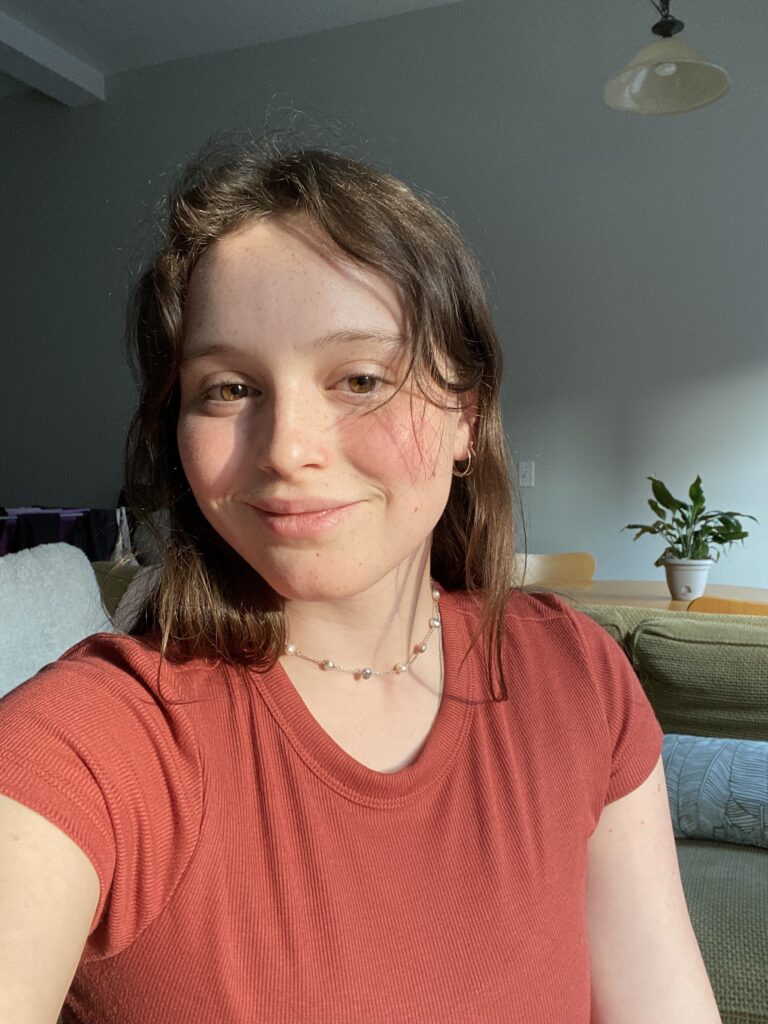
Caelan Grace McCollum, Fiber and Humanistic Studies, 2024
Caelan Grace McCollum was born and raised in Los Angeles, CA. She quickly developed a love for art and making through exposure to the many museums and deep creative culture of Los Angeles. Majoring both in Fiber and Humanistic Studies, Caelan seeks to make art that encourages the viewer to ask deeper questions about their relationships with themself, others, and the world.
Project Overview
Where did the first art come from? What do we classify as art? Or more specifically fine art? How has humanity changed as a result our ability to make art? And who or what has suffered as a consequence? My work aims to look at how these questions of artistry and humanity have been interconnected since the first time some Paleolithic version of modern humans made the first thing we would consider to be art. Ever since the age of art making, as one might call it, the distinguishing fact (and some would even say the thing that distinguishes our species from all others) is the inclusion of a human’s participation in the act of making. As centuries continued this detail has left many artisans out of the spotlight whether that be due to skin color or gender, excluding them from the art historical canon in which they play integral roles. It has also been used as a justification for abuse of power over laborers who were forced to spend their days manufacturing “art” or sometimes specifically “non-art” for the ruling classes. By using symbols that have been found in art since the days of cave painting and materials that have to some degree existed long before the modern day, my piece attempts to make connections with the artisans of the past. All while it is disguised in the shape of a lamp, an object that was likely mass produced and may have required unethical labor to make. In this way the bacterial cellulose and the wool speak to different centuries and different eras in the history of art.
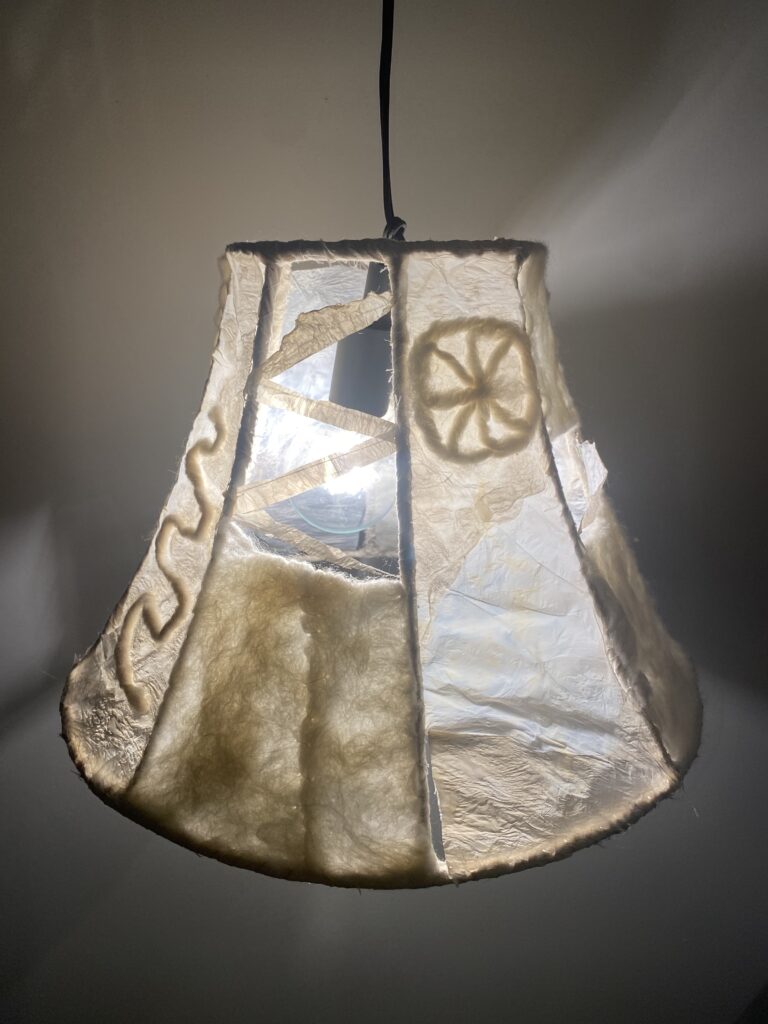
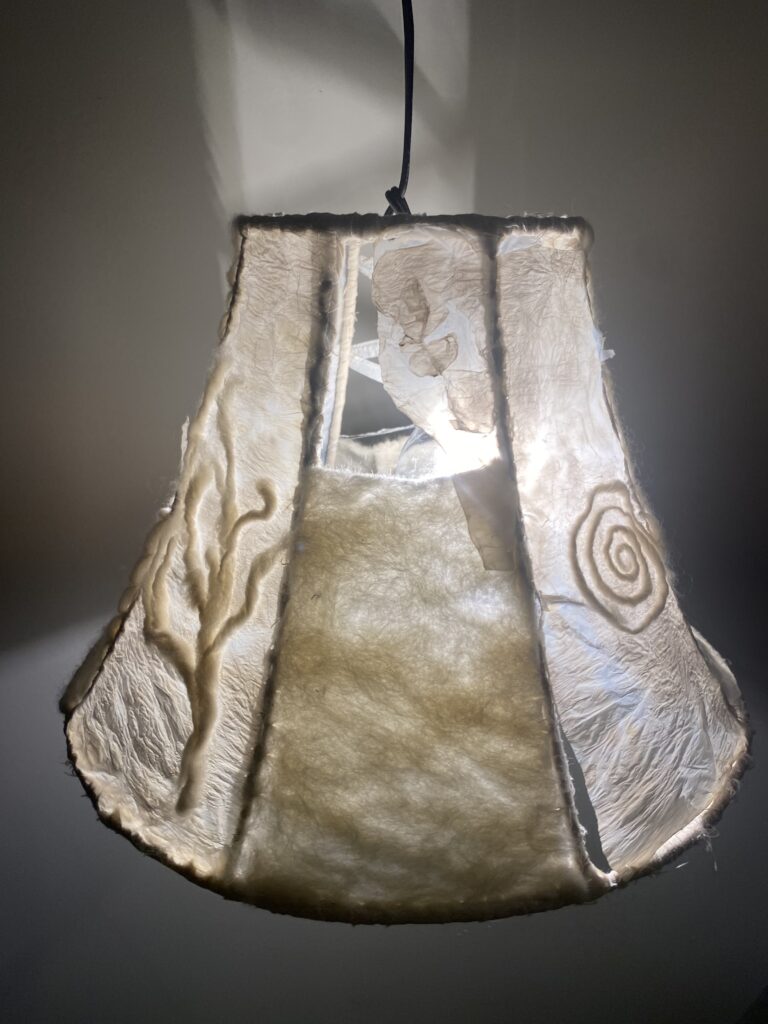
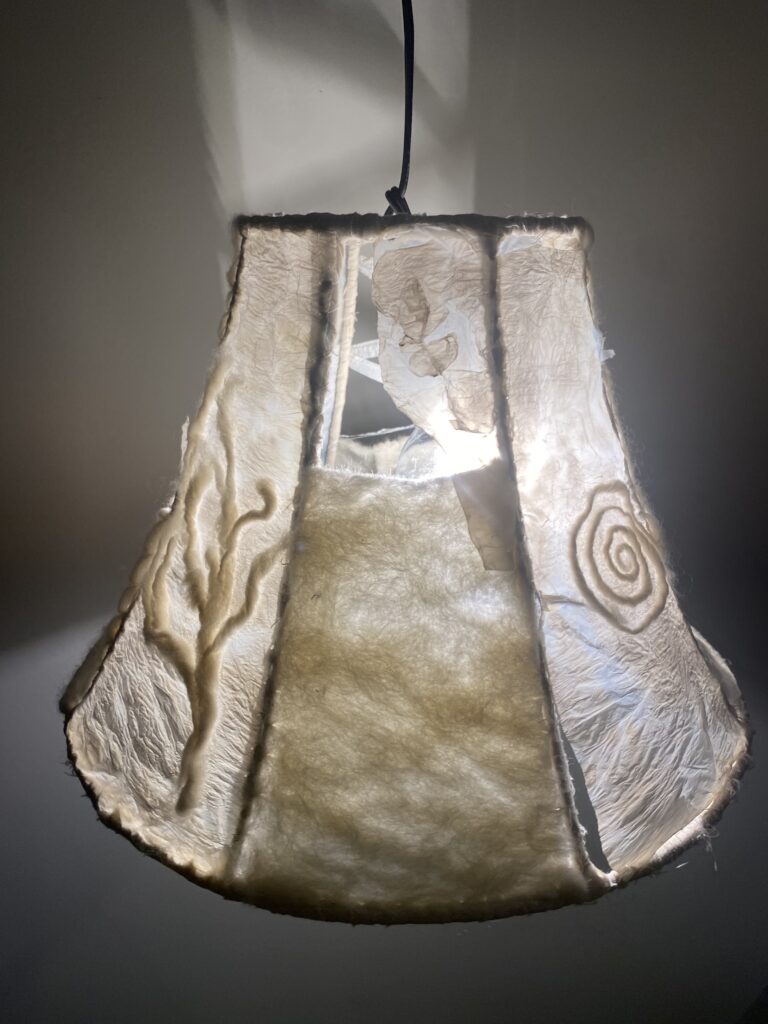
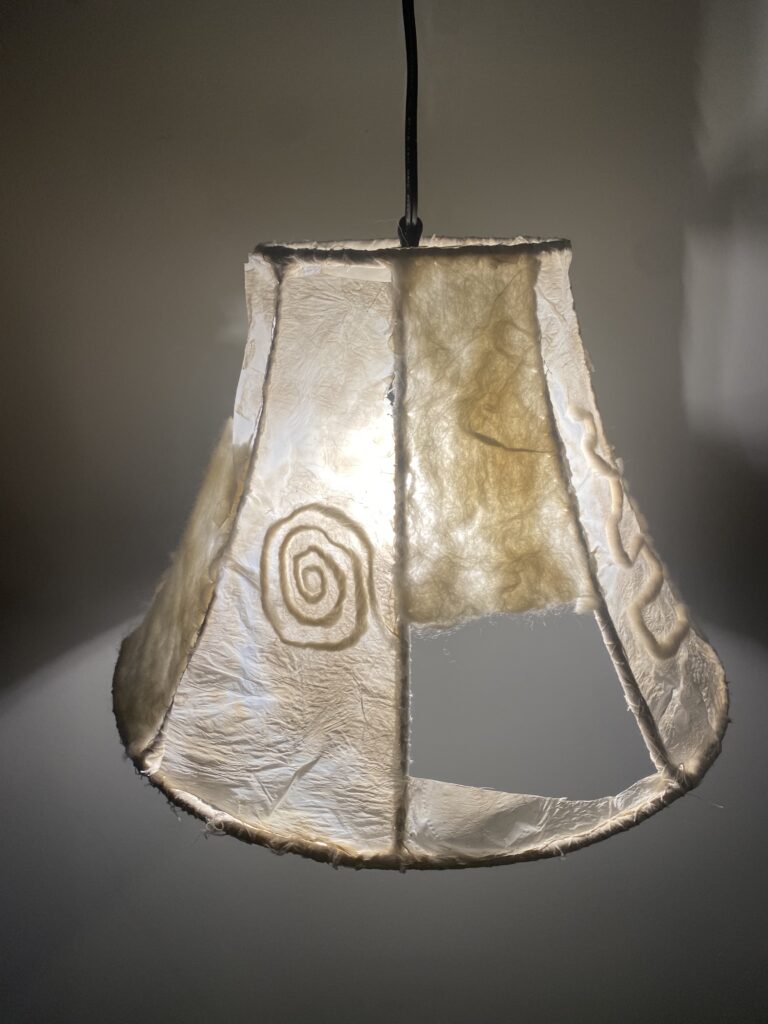
Process
In order to produce this final product we first had to start with growing bacterial cellulose on a liquid medium. For my project I used 6 liters of liquid media. This media was then inoculated with 50 ml of G.Hansenii bacteria. The media was left in a bin connected to airflow in the incubator for 2 weeks to allow it to grow. After 2 weeks, the pellicle was harvested and I began the washing process. After harvesting and noting the small amount of growth, the decision was made to add approximately a liter of new liquid media to the existing bin and re-inoculate it with 25 ml of a different bacteria culture to try and produce a thicker second pellicle. This pellicle was then left in the incubator to grow. Meanwhile, the first pellicle underwent a weeks worth of water changes with a three day long NaOH soak (a solution of 1,800 ml water and 200 ml of 1 molar NaOH) in the middle to kill off any remaining bacterium. After the first round of washing, the first pellicle then underwent cyclomethicone treatment. Which is a four day process of first replacing the water in the pellicle with two days of soaking in Isopropyl Alcohol, followed by two days of soaking in cyclomethicone. The hope was for this to help make the pellicle more pliable after drying. Once completed the pellicle was removed from its bath and placed on a sheet of parchment paper to dry. After approximately a day of sitting on the parchment paper I needle felted symbols into the pellicle and left it over a few days to fully dry. At this point, my second pellicle had been growing in the incubator for three weeks and was ready to harvest. As a result of a small spot of mold, the washing process for this second pellicle began with an NaOH bath. This was then followed with the original protocol of water rinses. After returning to the lab a few days after the second pellicle’s last water change, we were shocked to find that the water had turned bright green. This is presumably due to some form of mold continuing to exist even after the first soak in NaOH. In response to this outcome the second pellicle was washed with NaOH a second time, and then rinsed with water. Due to time constraints the now (and thankfully) clean second pellicle sits in water ready to be dried and used in a reworked version of the lamp. As for the lamp’s assembly, a metal frame was wrapped with muslin fabric scraps with the cut pieces of bacterial cellulose and felted wool hand stitched onto the lined frame.
Learn More
Click here to view more of my work









